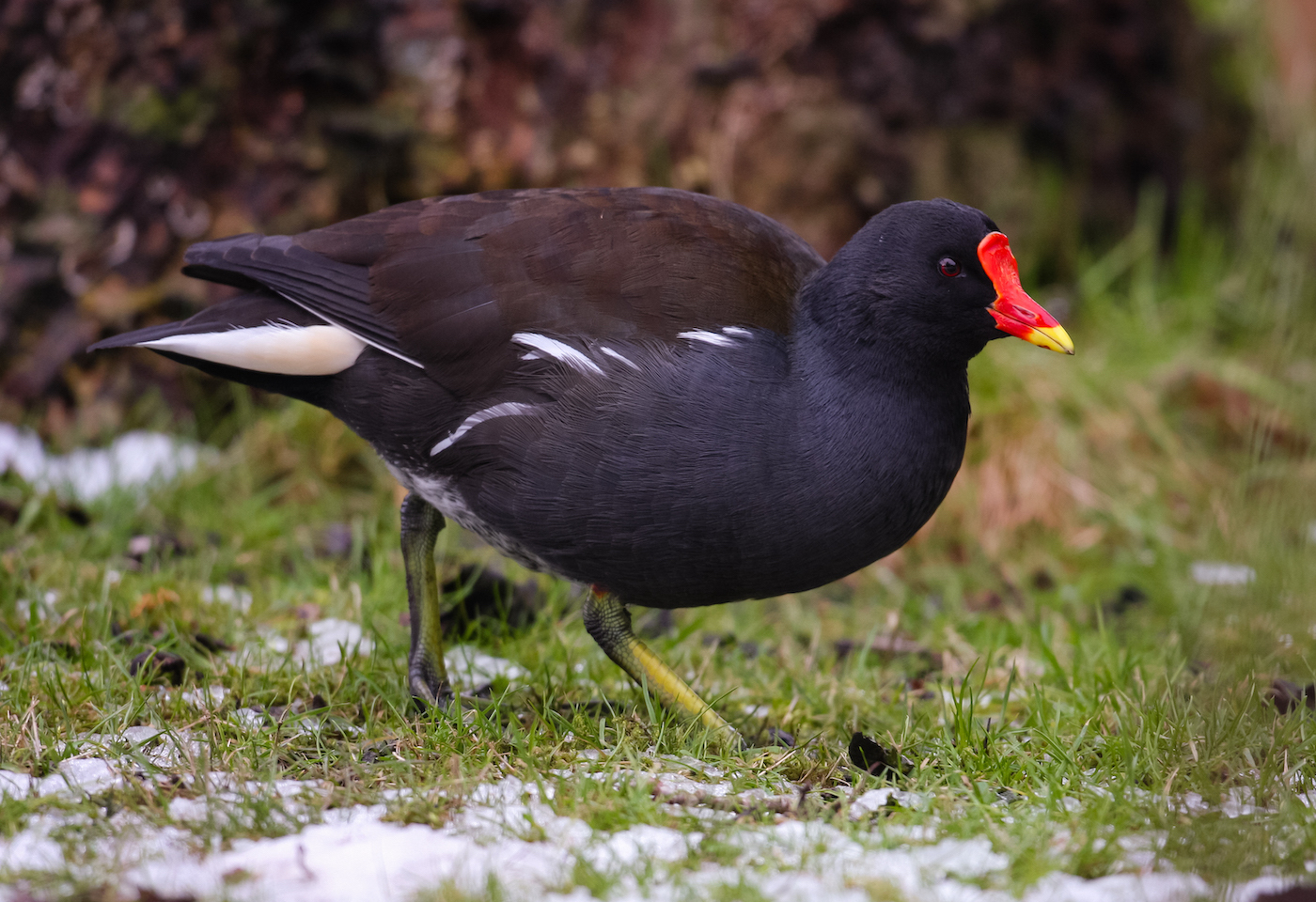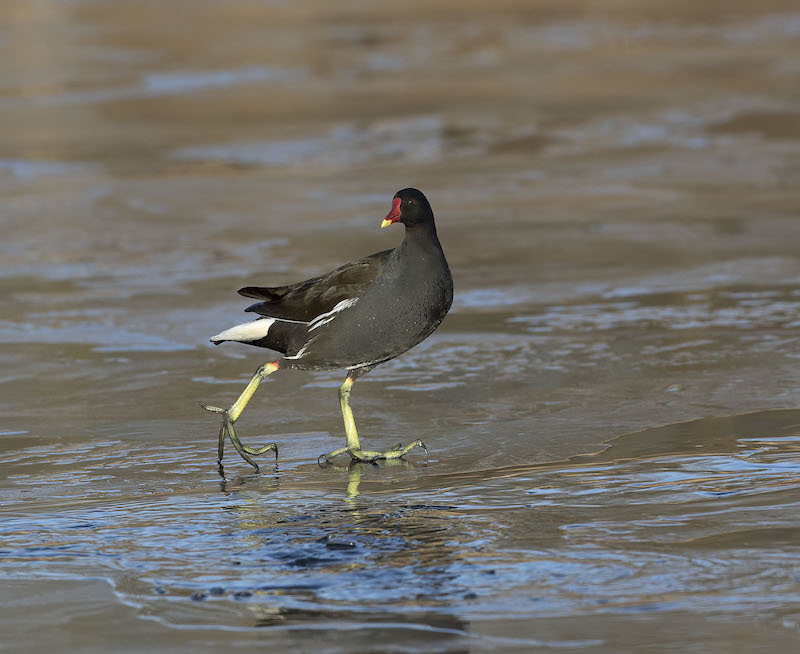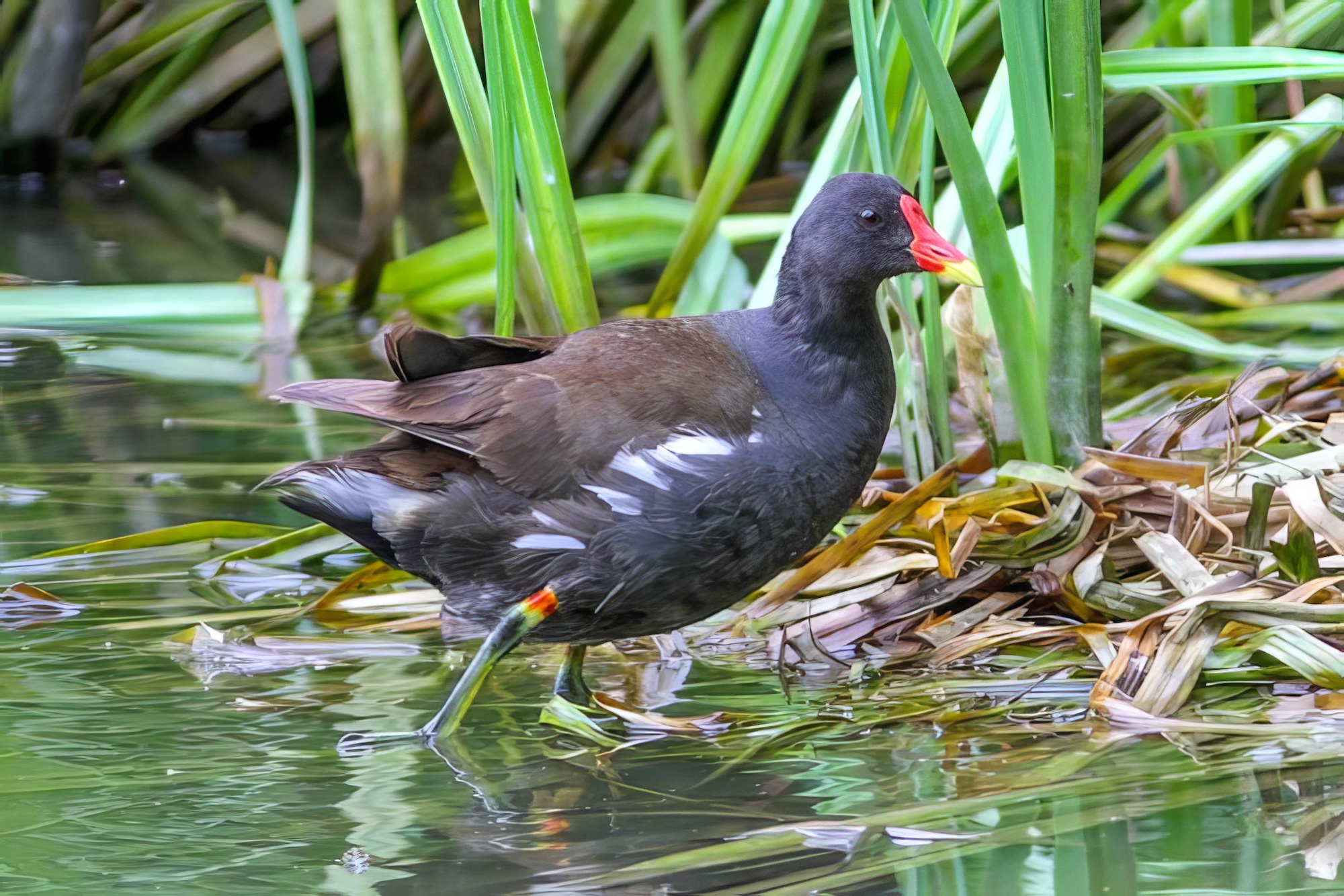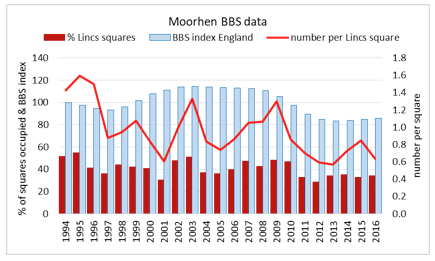Moorhen
Moorhen Gallinula chloropus
Very common resident and partial migrant.
Common Moorhen: left, Louth February 22nd 2010 (John Clarkson); centre, Barton Pits January 24th 2015 (Graham Catley); right, Gibraltar Point July 11th 2018 (Paul Hyde).
Moorhen has always been a very common resident and the Atlas estimated a population of 15,000 to 20,000 pairs. They are associated with the smallest waterbodies which helps make them very widespread. The BBS index indicated the population was fairly stable across England until around 2008/09. At that point something happened, and the population may have fallen by as much as half in Lincolnshire in the last 10 years. More so than the rest of the East Midlands or England. The APEP4 adjusted population estimate for Lincolnshire in 2016 was 7,000 pairs. The reasons for this fall do not appear to be well understood. The winter population also appears to be slightly down. WeBS data indicates that a mean of only 534 Moorhen per annum were counted on Lincolnshire WeBS sites over the winters of 2014/15 to 2018/19 compared to 667 between 2003/04 and 2007/08. Of course, the population is very widely spread and does not congregate in flocks the way many species of waterbirds do, making counting them more difficult.
British and Irish Moorhens are highly sedentary and their numbers are enhanced during the winter months by immigrant birds from northwest Europe. Birds ringed in Lincolnshire have been recovered (two shot) in Denmark, France, Germany and The Netherlands. One of the Danish recoveries was found 808 km from its ringing site at Crowland Common. Young birds ringed in the county have been recovered within the UK as far afield as Essex, Hampshire, and Worcestershire, the furthest bird having travelled 185 km. A single recovery was made of a German-ringed bird shot near Woodthorpe in 1929. The longevity record for this species from the BTO ringing scheme is 11 years and 3 months; that for Lincolnshire is 5 years and 6 months.
(Account as per new Birds of Lincolnshire (2021), included September 2022)




